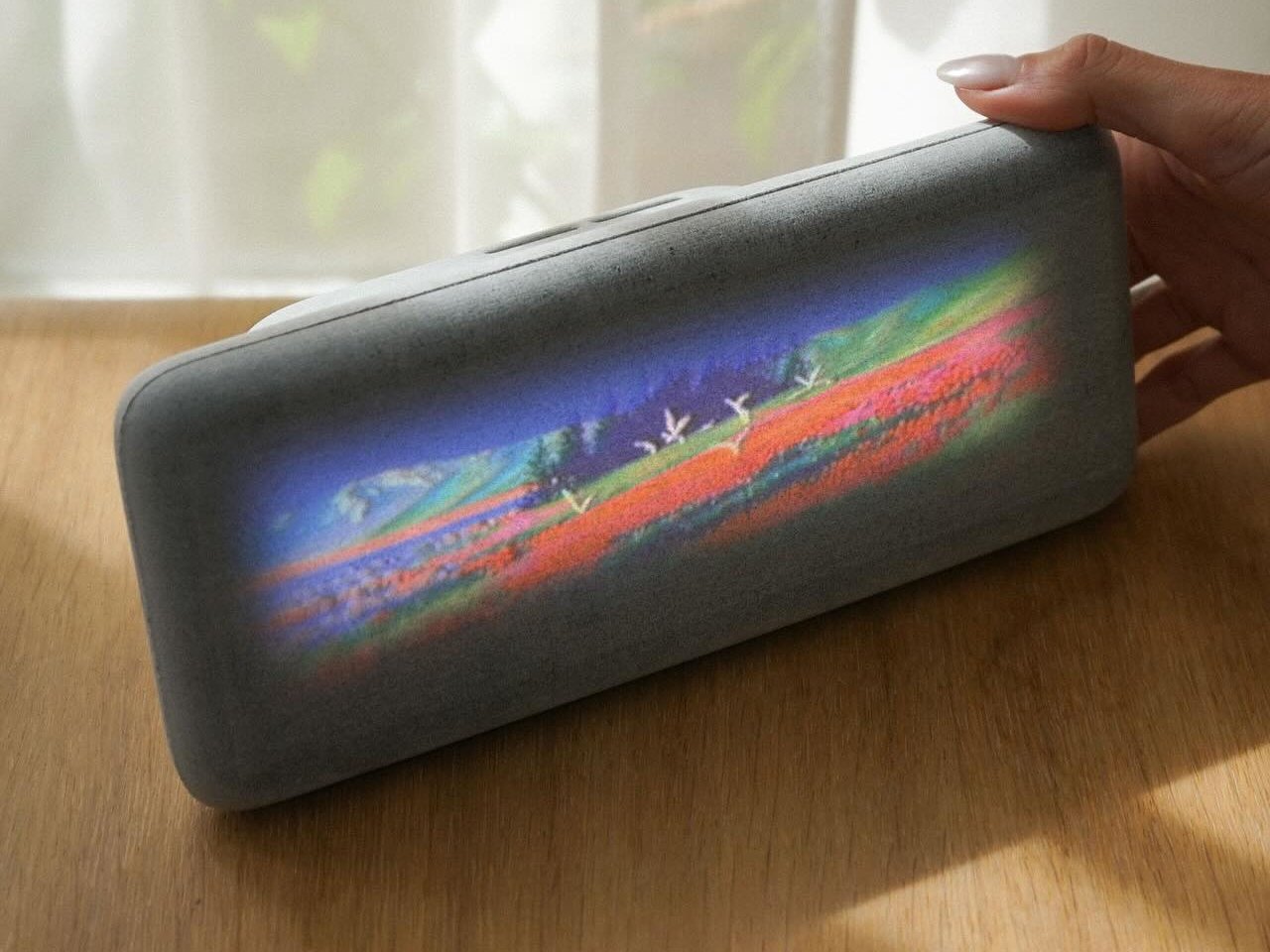There’s something oddly fascinating about a device that promises to turn your dreams into watchable videos, and Modem Works’ Dream Recorder actually delivers on that wild concept. This isn’t some futuristic brain-scanning contraption from a sci-fi movie, but rather a surprisingly simple bedside gadget that listens to your dream descriptions and transforms them into surreal, AI-generated visual art.
The whole thing feels refreshingly analog despite being powered by cutting-edge AI technology. Instead of another app cluttering your phone or complex smart home integration, Dream Recorder sits quietly on your nightstand like a piece of sculptural art, waiting for you to wake up and share whatever bizarre adventure your subconscious just took you on.
Designer: Ben Levinas & Joe Tsao (Modem Works)
How Dream Recorder Actually Works
The process is beautifully straightforward and feels almost meditative in its simplicity. You wake up, tap the device to activate recording, then speak your dream description into the built-in microphone just like you’re telling a friend about your weird night. The device uses OpenAI for transcription and LumaLabs for video generation, creating short, impressionistic videos that capture the mood and imagery of your spoken recollections.
What makes this particularly clever is how it stores up to eight dreams locally, letting you build up a week’s worth of subconscious content. The generated videos aren’t photorealistic recreations but rather flowing, dreamlike interpretations that mirror how dreams actually feel in your memory. Think less “recording” and more “artistic translation,” with the AI creating abstract visuals that somehow capture the emotional essence of your nighttime adventures.
The User Experience: Analog Meets AI
What sets Dream Recorder apart from typical sleep technology is its deliberately tactile, non-digital approach to interaction. There’s no smartphone app to fumble with, no notifications buzzing at you, and no complex setup process that requires reading through manuals. The experience feels more like talking to a thoughtful friend than operating a piece of technology.
The device sits there quietly, responding to simple physical interactions, making it feel like a natural part of your bedroom environment rather than an intrusion. You simply speak into it as naturally as talking to yourself, then watch as your subconscious thoughts transform into flowing, dreamlike visuals that somehow make perfect sense even when they’re completely abstract.
Beyond Sleep Tracking: A Creative Approach
While most sleep technology obsesses over data collection and optimization metrics, Dream Recorder takes a completely different philosophical approach. Instead of tracking REM cycles or heart rates, it explores the creative and emotional aspects of sleep, representing a shift from quantified self-improvement toward artistic self-expression that feels refreshingly human.
The open-source nature also sets it apart from typical consumer electronics in meaningful ways. Users can 3D print the housing, modify the software, and customize the AI training, creating a community-driven approach to dream visualization that feels transparent and hackable. At approximately €285 to assemble using off-the-shelf components, it’s accessible to makers and designers who want to experiment with this fascinating intersection of AI and creativity.
Quick Answers
Is there a device that can record dreams?
Yes, but Dream Recorder doesn’t literally read your brain. Instead, you wake up, speak your dream aloud into the device, and AI generates a visual interpretation based on your description.
How does a dream recorder work?
The device uses OpenAI for transcription and LumaLabs for video generation. It stores up to eight dreams locally, creating hazy, artistic videos that capture the mood and imagery of your spoken recollections.
The Future of AI and Human Creativity
Dream Recorder represents a fascinating intersection of AI capability and human creativity, offering a glimpse into how technology might enhance our inner lives rather than simply optimize our external ones. While the world is increasingly becoming dominated by data-driven wellness tracking, this device suggests an alternative path where technology serves imagination and self-reflection instead of just collecting more metrics about our bodies.
The whole concept feels like a preview of how AI might evolve beyond productivity tools and chatbots into something more personal and emotionally resonant. It’s the kind of project that makes you realize how much untapped potential exists in combining artificial intelligence with human creativity, especially when the focus shifts from efficiency to expression and from optimization to exploration.
The post Dream Recorder Lets AI Turn Your Nighttime Dreams Into Moving Art first appeared on Yanko Design.

